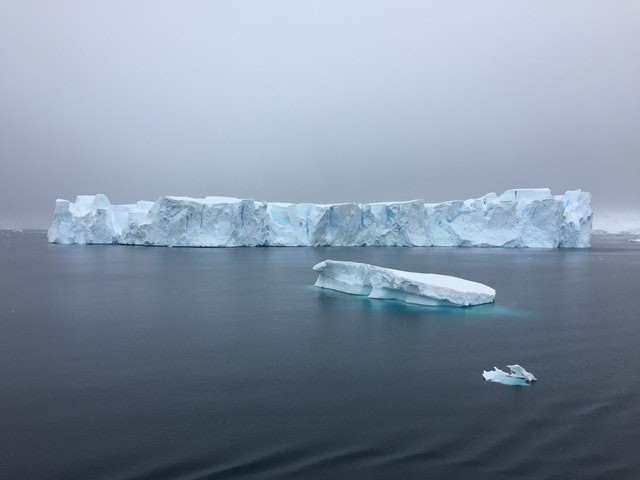There could be melting of the glacier at the key points holding it to the land. A robotic submarine has gotten back from the dark underbelly of one of the largest Antarctica glaciers with chilling information- it could be melting rapidly than we formerly thought.

The Unmanned Submarine
Thwaites Glacier, an enormous ice shelf in West Antarctica, has been on the radars of climate scientists for about two decades now. But they don't have the knowledge on how quick the glacier was melting, and how near it was to collapse entirely, until scientists sent an unmanned submarine (an underwater vehicle) beneath the ice shelf.
The initial measurements ever carried out in the dark waters under the 192,000 square kilometers (74,000 square miles) ice chunk disclosed a disquieting piece of news: A current of warm water that was previously underestimated is flowing from the east, whittling away at different key "pinning points" that hold the shelf to the land.
Doomsday Glacier
The study authors penned down in the paper, which was released April 9 in the journal Scientific Advances: "Our observations reveal warm water impinging from all sides on pinning points critical to the stability of the ice-shelf, a scenario that may bring about retreat and unpinning."
That is to say, the whole ice shelf could get separated and then flow into the ocean. As one of the quickest melting glaciers of Antarctica, Thwaites Glacier, cheerfully given the nickname the "Doomsday Glacier," since the 1980s has lost about 540 billion metric tons (595 billion tons) of ice, contributing to a 4% increase in global levels of the sea since that time.
The glacier behaves like a cork in a bottle of wine, hindering the rest of the ice in the area from flowing into the sea, so the collapse of Thwaites Glacier could potentially take the remaining West Antarctic Ice Sheet along with it, causing a 3 meters (10-foot ) increase in global sea levels.

The Craft
Alastair Graham, the study co-author, and also an associate professor of geological oceanography at the University of South Florida, told Gizmodo: "The panic is that this water is coming in contact directly with the underside of the ice shelf at the extent where the tongue of the ice and shallow seafloor comes together."
That's bad news for the glacier. Located over 1,600 kilometers (1,000 miles) away from the closest research base, Thwaites is far away even by the standards of the Antarctic. Experts have previously tested temperatures surrounding its edges, and even kept a torpedo-shaped robot through a 700 m deep (2,300-foot) hole in the ice, but this study marks the first time a submarine has gotten into the cavity beneath the shelf.
The craft, called Ran after the Norse goddess of the sea, weighed the temperature, strength, salinity, and oxygen content of the ocean currents flowing below the glacier.
Related Article : Melting Doomsday Glacier in Antarctica Could Cause 10-Ft Sea Level Rise
For more news, updates about glaciers and similar topics, don't forget to follow Nature World News!
© 2026 NatureWorldNews.com All rights reserved. Do not reproduce without permission.





